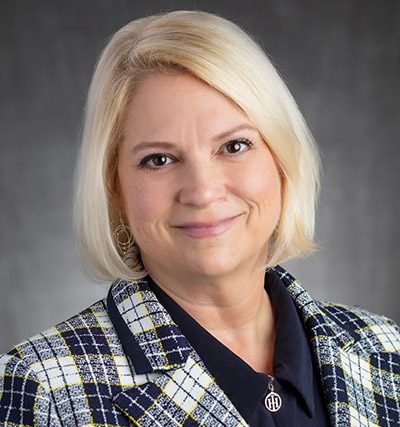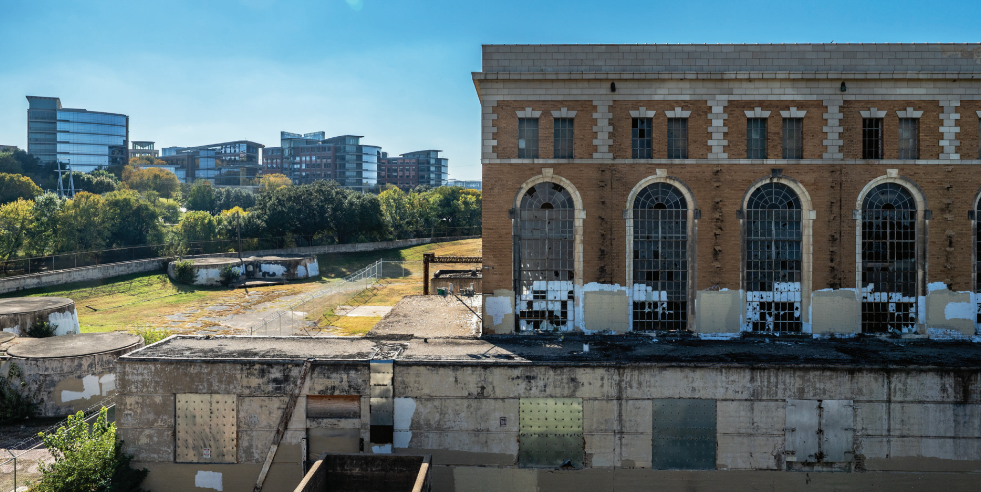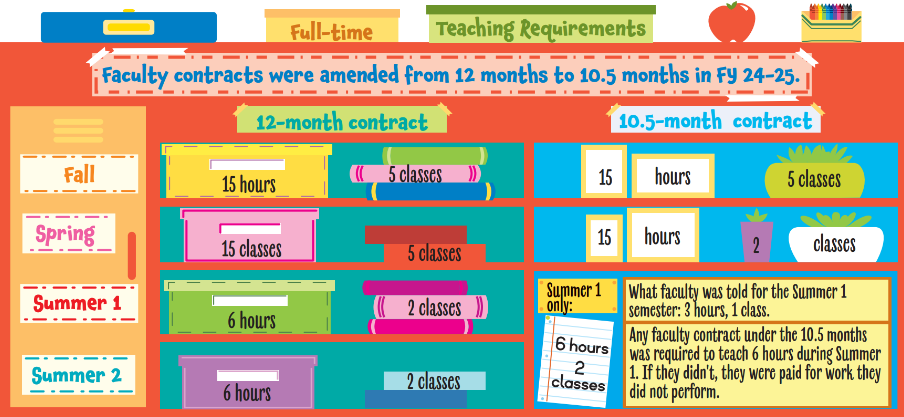By Kathryn Kelman and Jamil Oakford
Students share what two-year college’s value provides them
For the second time this year, President Donald Trump said people “don’t know” what a community college means and likened it to vocational school in a recent speech, something TCC students had plenty to say about.
The president began this topic by saying he didn’t “know” what community college meant during the speech in Cleveland March 29.
“Call it a vocational school,” he said. “They know what that means. They don’t know what community college means.”
TR student John Parnell said he doesn’t think it’s accurate to equate the two because vocational schools serve a specific purpose while community colleges cover a broad range of fields of study.
“I mean we even have acting classes here,” he said.
Parnell said if he saw Trump he would tell him that community colleges are a pillar for the community they’re in. According to College Board, community colleges serve more than 40 percent of undergraduates across the country.
“I think if you try to hack at that, you’re going to hurt the economy in the long run because us at the lower rings that have to come through these places just to afford to go to college are not going to be able to go to college anymore,” Parnell said.
Forcing students to go to trade or vocational schools is “ludicrous,” and they should have both options available to them, he said.
“I think both are necessary, and I personally think community colleges are very vital to the community and to the surrounding areas to help us better ourselves,” Parnell said.
NE student Alec Wisdom said it sounded like Trump was attempting to argue semantics, which is just Trump being Trump.
“Whether it’s called vocational or community college doesn’t matter,” Wisdom said. “The purpose it serves is what’s important.”
Wisdom said he believes community colleges and vocational schools are integral parts of communities because a large amount of the population go to trade schools, vocational schools or community colleges to earn degrees and certifications.
“They’re all places to figure out what direction you’re going,” he said.
NE student Paul Cline also said it seemed like Trump was arguing semantics, but there’s really not an argument to be had there.
“I think people know what community colleges are,” Cline said. “It provides people in that community an affordable place to go to get skills and to basically get the training they need to follow their passion whether or not that’s the career they want to go into or maybe you’re just really passionate about something and there’s a program about it at the community college,” he said.
NW student Briette Johns said she agreed with the president that it could be confusing for people trying to define a community college.
“I can see the issue behind that, but I feel like people who have been around should and would know what a community college is,” Johns said.
She has always recommended community colleges to people, she said.
“It’s beneficial for those who are looking to go to a four-year college but don’t want to pay as much and get their basics done, and it’s also a great help for finding friends and a tight-knit community and giving you that college experience without having to pay all the money,” Johns said.
For NE student Austin Wallace, Trump didn’t seem to get his ideas across, something Wallace thinks happens often.
“I feel like every time he opens up his mouth he either, a) doesn’t say what he really means and just puts his foot in his mouth, or b) just says something completely irrational to the point where it’s just a crazy man talking at points,” Wallace said.
As for his comments on community colleges, Wallace said the president is “completely wrong.”
“I think what he’s trying to get at is people who go to community college aren’t trying to get their education. They’re trying to get a skill. And I’m going here strictly to get my basics out and get a higher education than high school,” he said. “I feel like I’m learning just as fast as people who are going to university.”
Wallace said he has friends at four-year universities and that he’s learning the same things they are, just at a cheaper price.
“It has nothing to do with wealth, but it’s just the community helping each other out to get that higher education and to better our community, and that’s what I really think community college means,” he said.
NW student Mitul Patel said he felt Trump’s comments were an attempt to say community colleges are bad and don’t teach students what they need to transfer to four-year universities.
“I disagree with that idea,” Patel said. “I disagree with Trump, but I mean who wants to agree with Trump, right?”
NE student Cierra Simpson also disagreed with the president’s comments though she acknowledged she could be biased because she isn’t a supporter of his.
“I feel like when he said that he was judging students who go to community college who can’t afford going to a regular university just yet, I think he needs to re-educate himself,” Simpson said.
Community colleges are a good stepping stone for students who haven’t figured out what they want to do yet, she said.
“It’s pretty cheap to get your basics done at a community college and then maybe along the way you’ll figure out what you want to do and then you can transfer out and go to a university,” she said. “That’s the main purpose of a community college.”
The Texas Association of Community Colleges defined community colleges as a place for students to grow and learn.
“Community colleges create ecosystems that reach diverse and underserved populations while simultaneously driving regional opportunity and engagement,” communications and public relations director Amanda Longtain wrote in an email.
She also said community colleges serve as centers for more than just academic learning. They provide a chance for cultural growth and development. These schools also provide something even more important to the state, Longtain said.
“Community colleges are the backbone of economic growth in Texas,” she said.




































